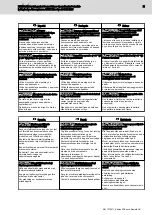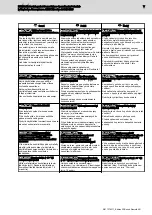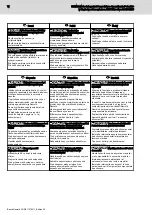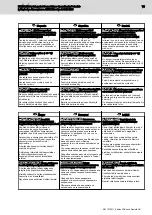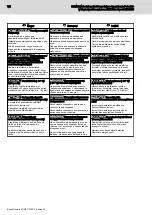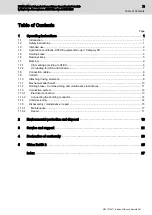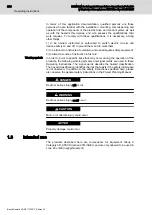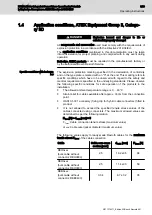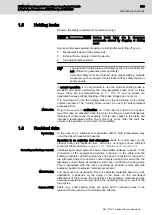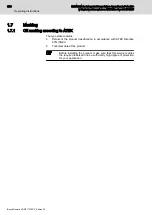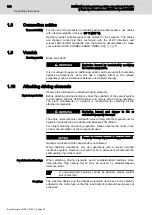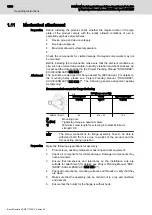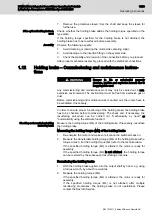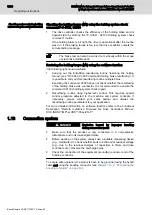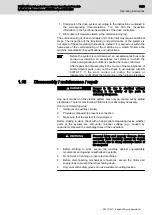
1.5
Holding brake
Observe the safety requirements for system design.
Serious bodily injury due to dangerous
movements caused by dropping or sinking
axes!
WARNING
Secure vertical axes against dropping or sinking after switching off by e.g.:
●
Mechanical locking of the vertical axis
●
External brake, arrestor, clamping device.
●
Axis weight compensation
The standard holding brakes controlled by the drive controller are
not sufficient to guarantee personal safety!
Personal safety must be achieved using higher-ranking, fail-safe
measures, such as danger zones blocked off by safety fences or
safety guards.
In normal operation, it is only allowed to use the optional holding brake in
standstill and when performing the drive-integrated brake test. In these
cases, there are low temperatures of T < 100 °C, and no sparks are
generated because critical dragging of the brake linings does not occur.
It is not allowed to use the holding brake to stop the turning motor during
normal operation! The holding brake cannot be used for safety-relevant
purposes either.
Malfunction
Only in the event of a malfunction, i.e. in the case of a fault in the system,
may the brake be activated when the motor is turning to prevent dangerous
dropping of vertical axes, for example. In this case, sparks in the brake and
increased temperatures within the motor may occur. After the fault has
occurred, the operator must remove it immediately.
1.6
Residual risks
Overloading
In the case of an electrical or mechanical defect, high temperatures may
occur that result in explosion hazards.
Operation in an explosive dust atmosphere leads to a dust layer on the
product during the exposure time, and does no longer ensure sufficient
cooling of the product (see
chapter 1.15.1 "Maintenance" on page 17
Grounding and leakage currents
Variable-speed drive systems cause unavoidable leakage currents. If the
connection of the equipment grounding conductor in the cable and the
bonding conductor at the housing have not been connected as required or
are interrupted due to corrosion or other defects during their service life, the
discharge current flows as leakage current over conducting housing parts.
This is associated with the risk of sparking at transition points and with
explosion hazard if explosive materials are present.
Material aging
The exposure and penetration times of explosive materials depend on the
application. It depends on the aging of the seals, on the mechanical
attachment of the product, the properties of the explosive materials and the
average temperature occurring during the operating time as a result of the
load cycles.
Impermeability
Seals (e.g., shaft sealing rings) are aging and if necessary have to be
replaced on the occasion of a maintenance interval.
KSM02 Motor-Integrated Servo Drives Operation in Potential‐
ly Explosive Atmospheres ATEX Directive 2014/34/EU
5/29
Operating instructions
R911379011_Edition 02 Bosch Rexroth AG

